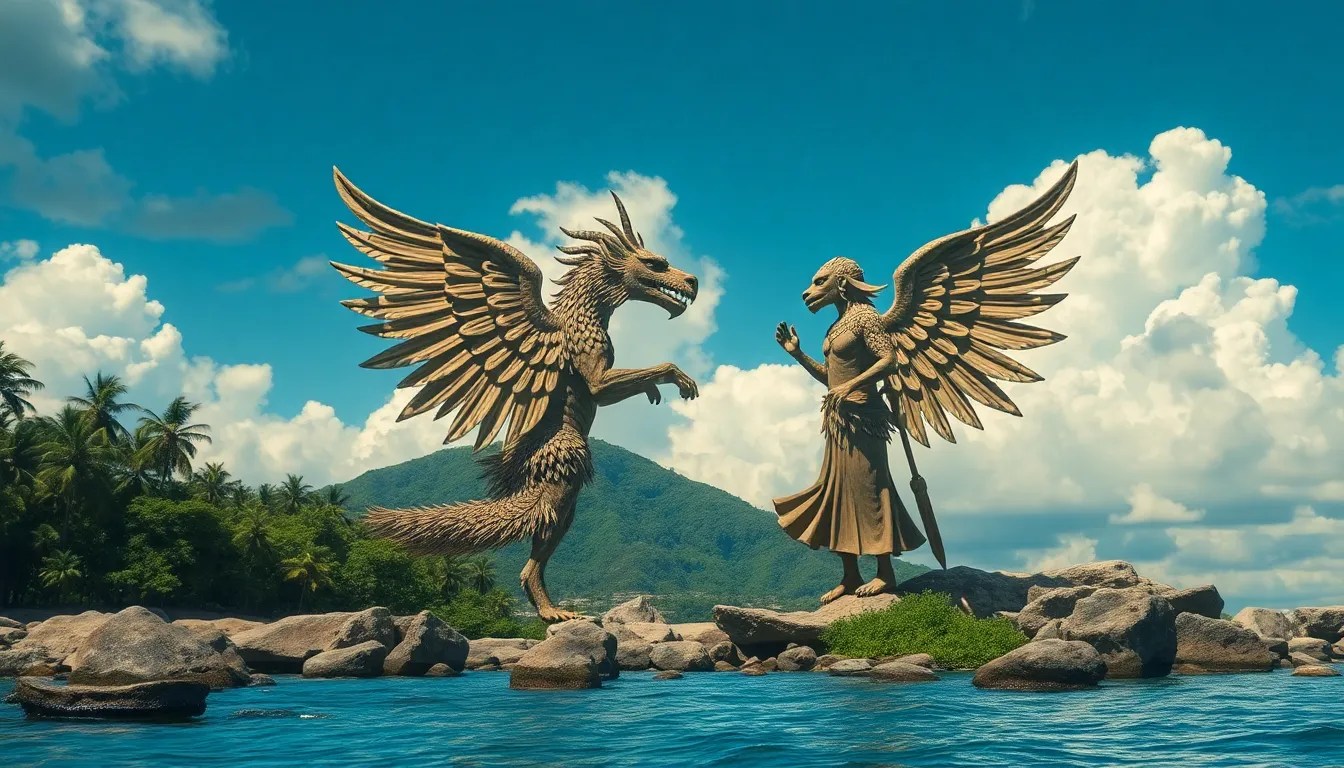The Sky’s Embrace: How Polynesian Myths Reflect Love and Unity
I. Introduction
Polynesian mythology is a rich tapestry of stories, beliefs, and traditions that reflect the unique worldview of the Polynesian people. These myths are not merely tales but serve as a profound expression of cultural identity, values, and community. Central to many of these stories is the theme of love and unity, which resonates deeply within Polynesian culture.
This article explores various myths that embody these themes, delving into the connections between the sky, love, and the communal spirit that binds the Polynesian islands together. Through these narratives, we will uncover the significance of love and unity in creating a harmonious society.
II. The Role of the Sky in Polynesian Cosmology
In Polynesian cosmology, the universe is viewed as a vast, interconnected web, with the sky playing a pivotal role. The sky is not just a physical entity but serves as a symbol of connection and unity among the many islands in the Pacific Ocean.
Key aspects include:
- The Sky as a Connector: The sky is often seen as the realm that links the islands, facilitating communication and travel among them.
- Deities of the Sky: Polynesian myths are populated with deities associated with the sky, each with unique narratives that reflect the importance of love and unity.
III. Mythical Tales of Love: The Story of Māui and Hina
Māui, a trickster demi-god renowned across Polynesia, embodies the spirit of adventure and ingenuity. His stories often highlight his relationships, particularly with Hina, a significant figure in many myths.
The romantic tale of Māui and Hina is a poignant narrative that showcases themes of sacrifice and unity. In their story, Māui’s quest to impress Hina leads him to perform incredible feats, demonstrating his love and devotion.
Key themes include:
- Sacrifice: Māui often faces great challenges for the sake of his love for Hina.
- Unity: Their relationship symbolizes the bond between the heavens and the earth, illustrating the harmony that can be achieved through love.
IV. The Creation Myths: The Bond Between Earth and Sky
Creation myths are foundational in Polynesian culture, often depicting the relationship between Papatuanuku (Earth Mother) and Ranginui (Sky Father). Their separation is a critical event in many stories, symbolizing the birth of life and the universe.
This separation reflects profound themes of love and unity, as it was born out of the desire for light and space, allowing creation to flourish. The ongoing connection between Earth and Sky serves as a reminder of the unity that exists within diversity.
Key points include:
- Symbolism of Separation: The act of separating Earth from Sky signifies the sacrifices made for the greater good.
- Reflection on Love: Their enduring bond is a metaphor for the love that sustains life and community.
V. The Influence of Ancestor Worship on Love and Community
Ancestor worship plays a vital role in Polynesian society, highlighting the importance of family and communal ties. Ancestors are revered and honored, fostering a sense of belonging and continuity.
Myths that emphasize familial love and collective unity often revolve around ancestral figures, illustrating how love transcends generations.
Examples of practices include:
- Rituals: Ceremonies honoring ancestors strengthen community bonds and promote collective identity.
- Storytelling: Sharing tales of ancestors reinforces values of love, respect, and unity within the community.
VI. Deities of Love and Harmony: Pele and Lono
Pele, the goddess of volcanoes and love, is a powerful figure in Hawaiian mythology, known for her passionate nature and her connection to the land. Her stories often reflect the duality of love—its beauty and its potential for destruction.
Lono, the deity of agriculture and peace, embodies harmony and balance. Together, these deities illustrate the complex interplay of love and conflict, as well as the unity that can arise from overcoming challenges.
Key insights include:
- Pele’s Passion: Her fierce love for her homeland is expressed through the creation of new land via volcanic activity.
- Lono’s Peace: As a bringer of fertility and abundance, Lono represents the harmonious aspects of love.
VII. Modern Interpretations and Cultural Revivals
In contemporary times, there has been a resurgence of interest in Polynesian mythology, with many artists and writers adapting ancient stories for modern audiences. These adaptations often emphasize themes of love and unity, reflecting their enduring relevance.
Efforts to preserve and celebrate Polynesian mythology include:
- Literature: New works inspired by traditional myths highlight the importance of love and community in today’s world.
- Art: Visual representations of mythological themes serve as a bridge between past and present, fostering cultural pride.
VIII. Conclusion
Polynesian myths offer profound insights into the significance of love and unity within the culture. These stories not only celebrate relationships among individuals but also emphasize the interconnectedness of the community as a whole.
The enduring legacy of these myths continues to promote communal values, inspiring both reverence for the past and hope for the future. As we explore Polynesian mythology, we are invited to appreciate the depth and beauty of these narratives that reflect love and unity.



